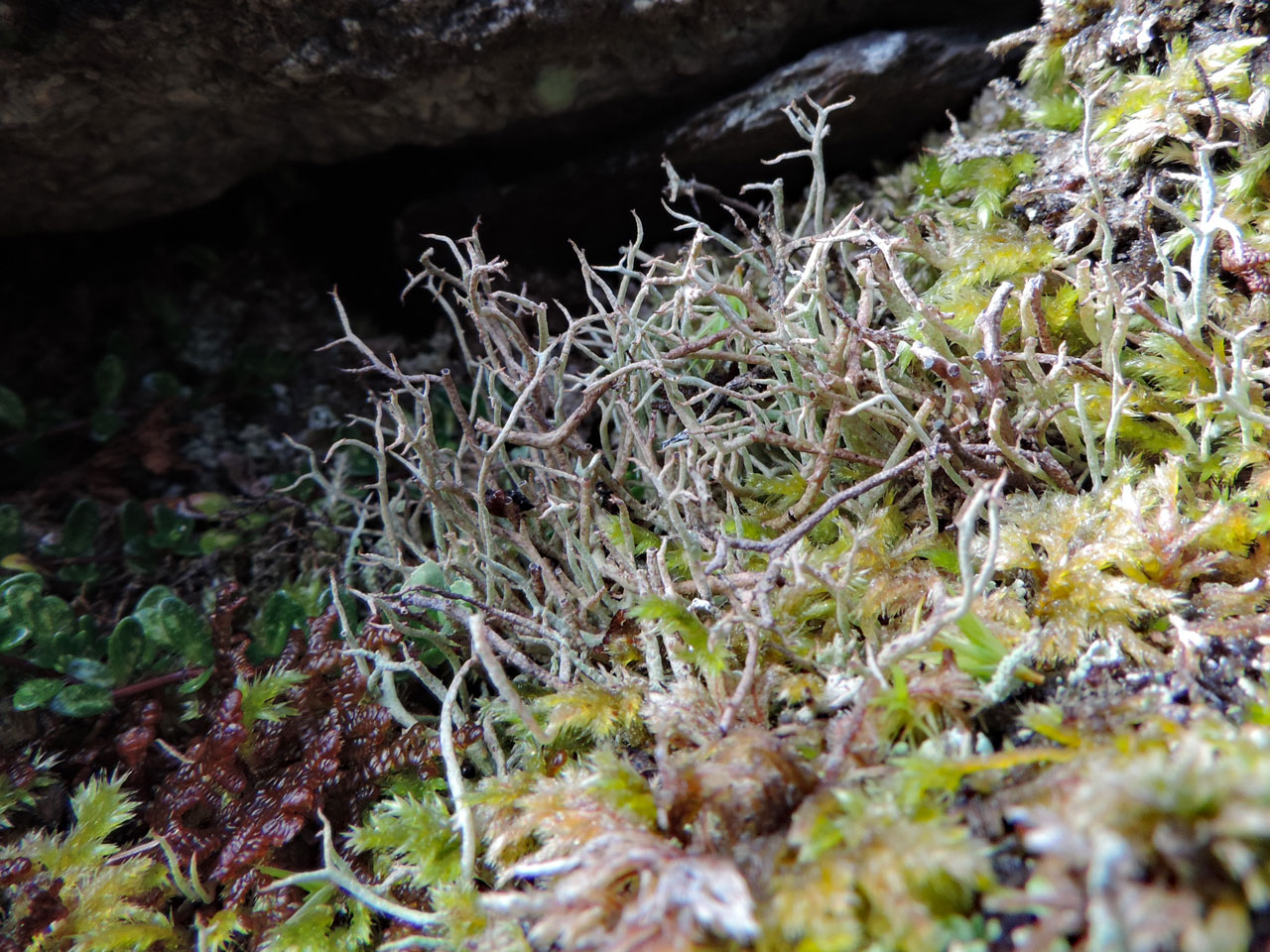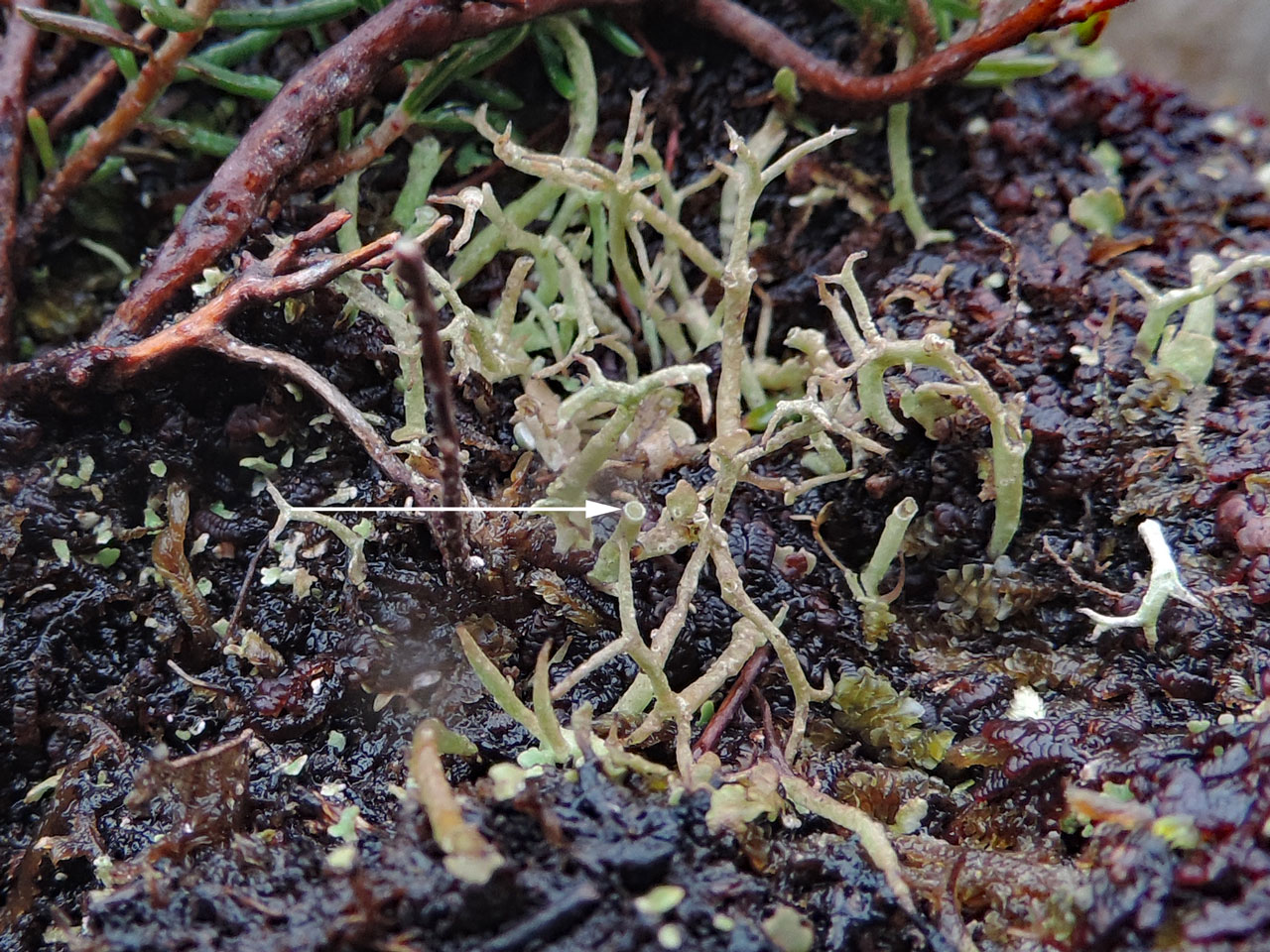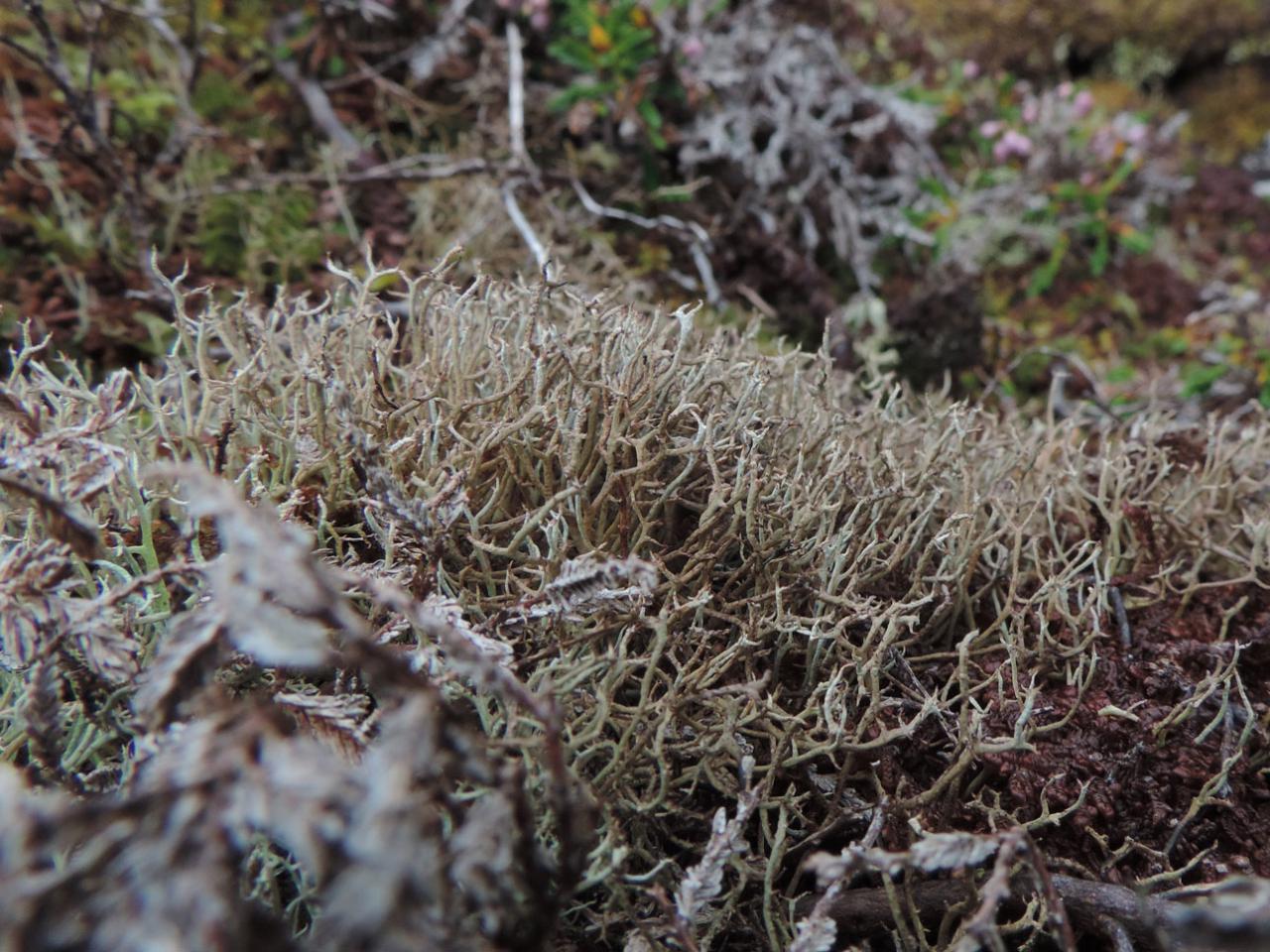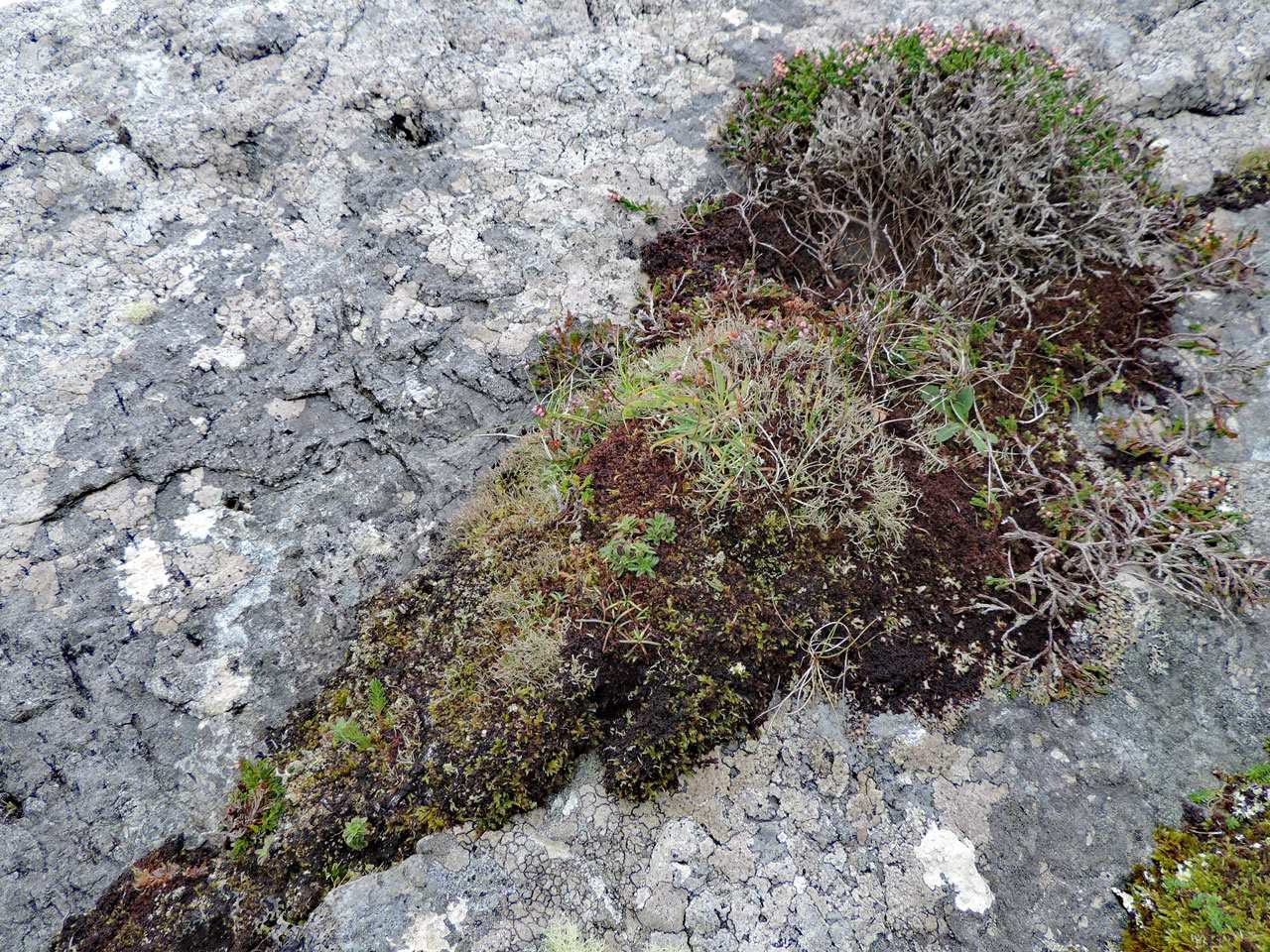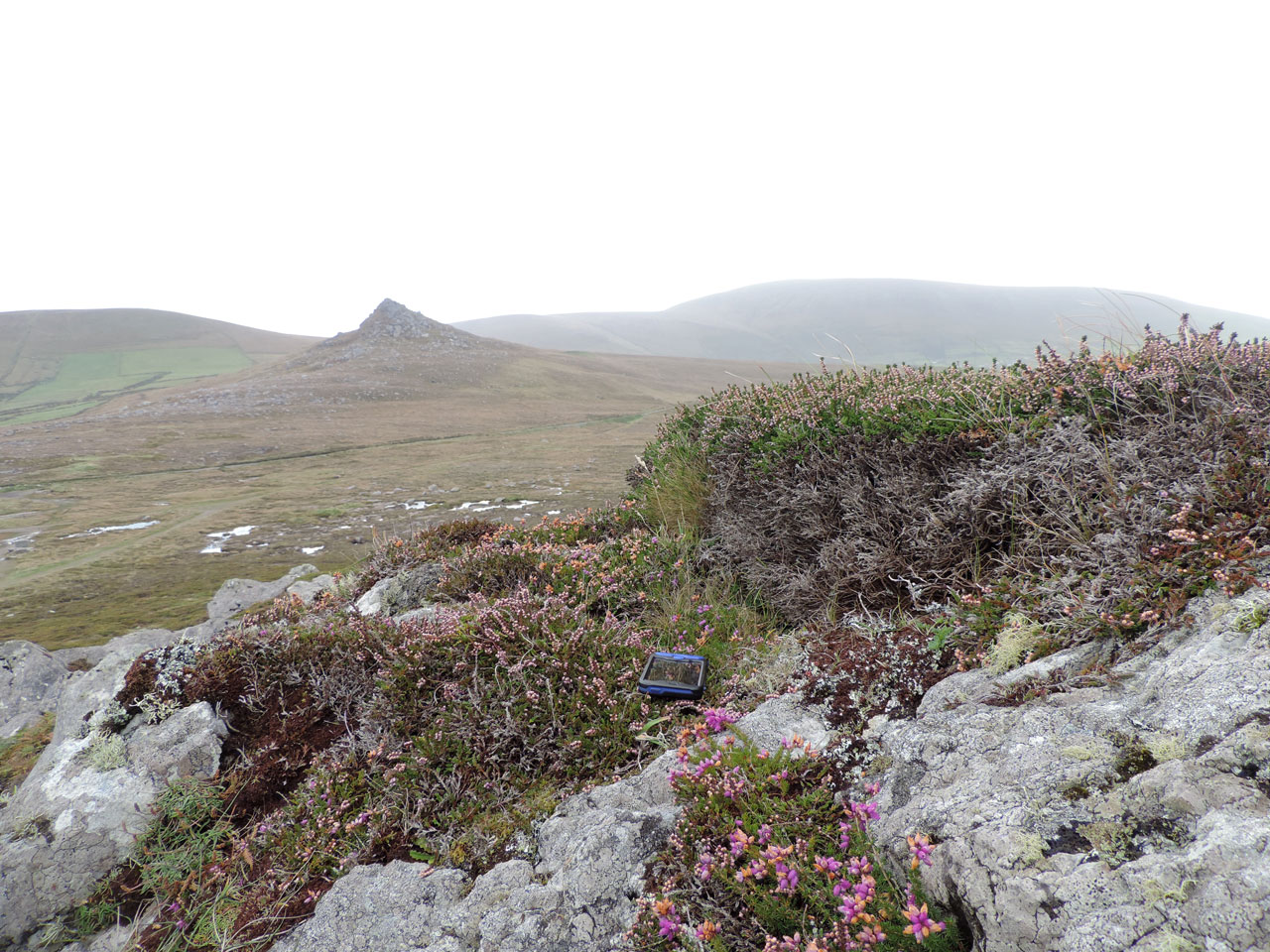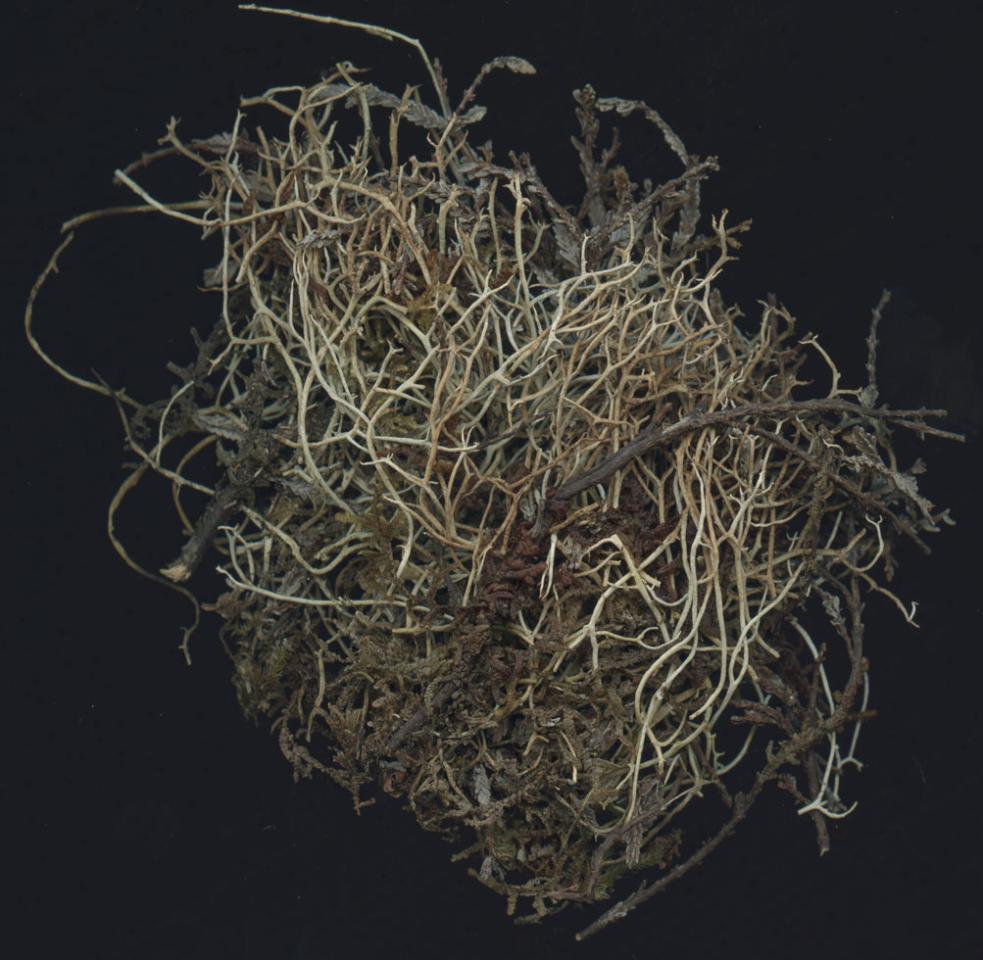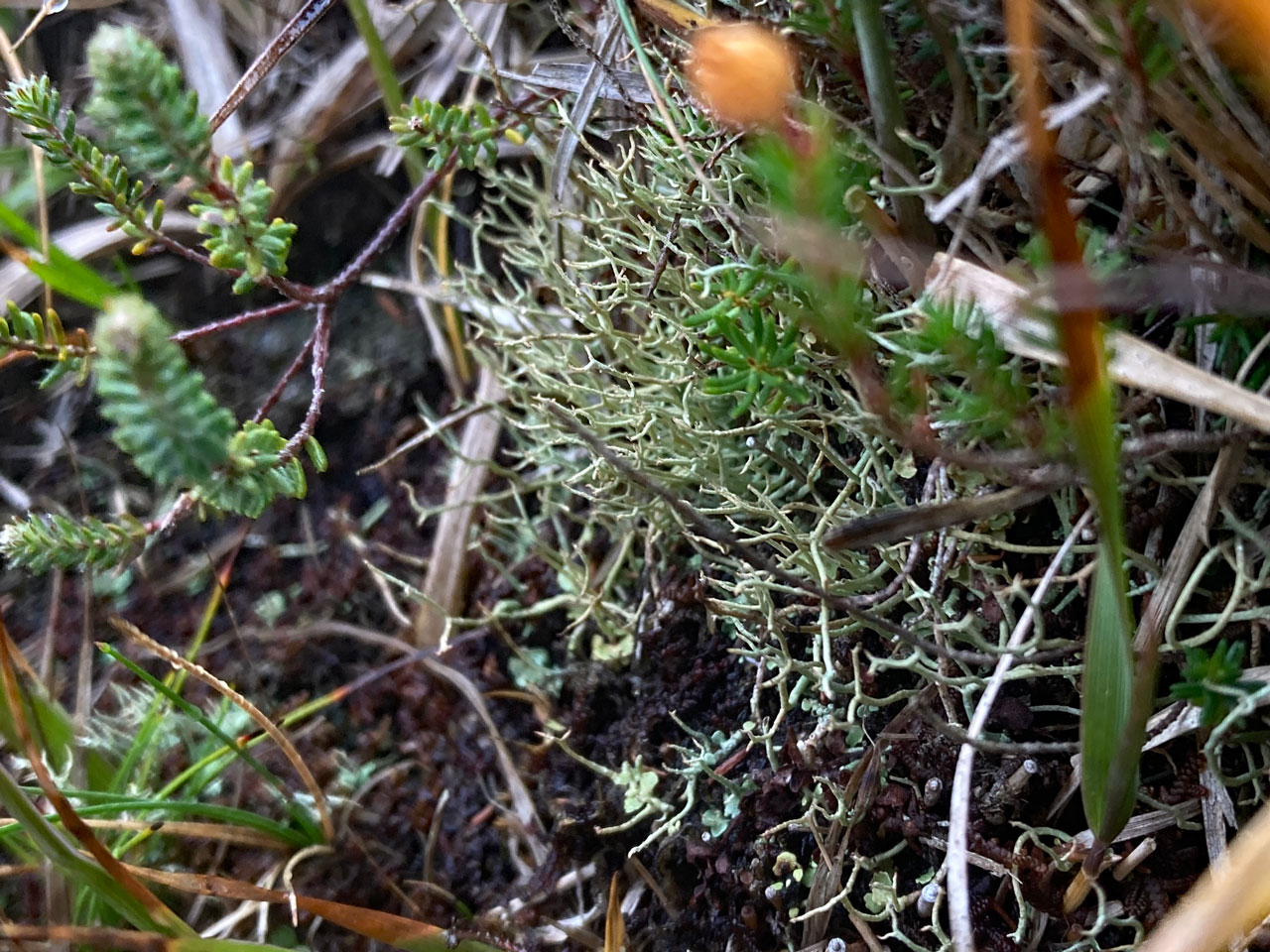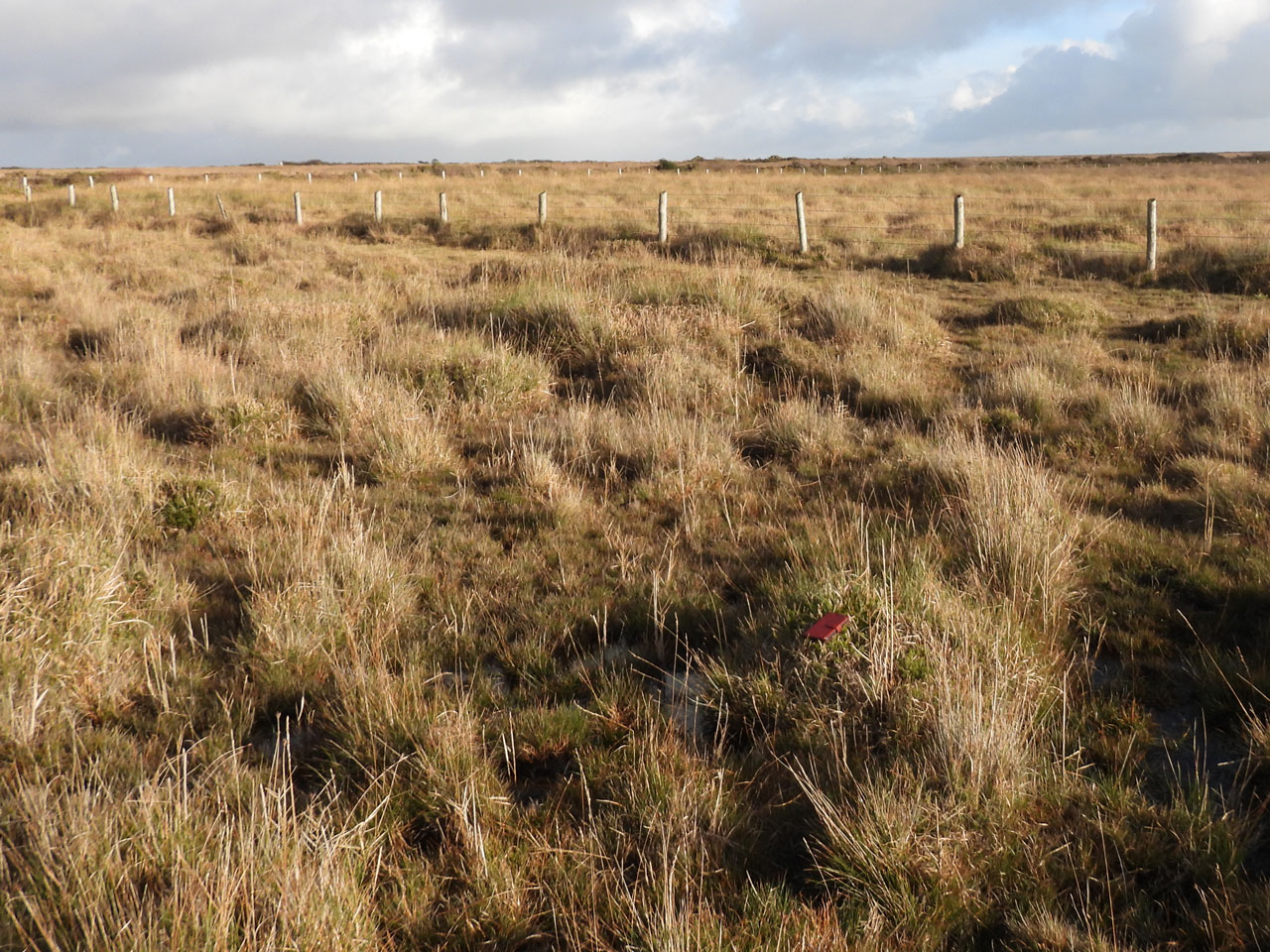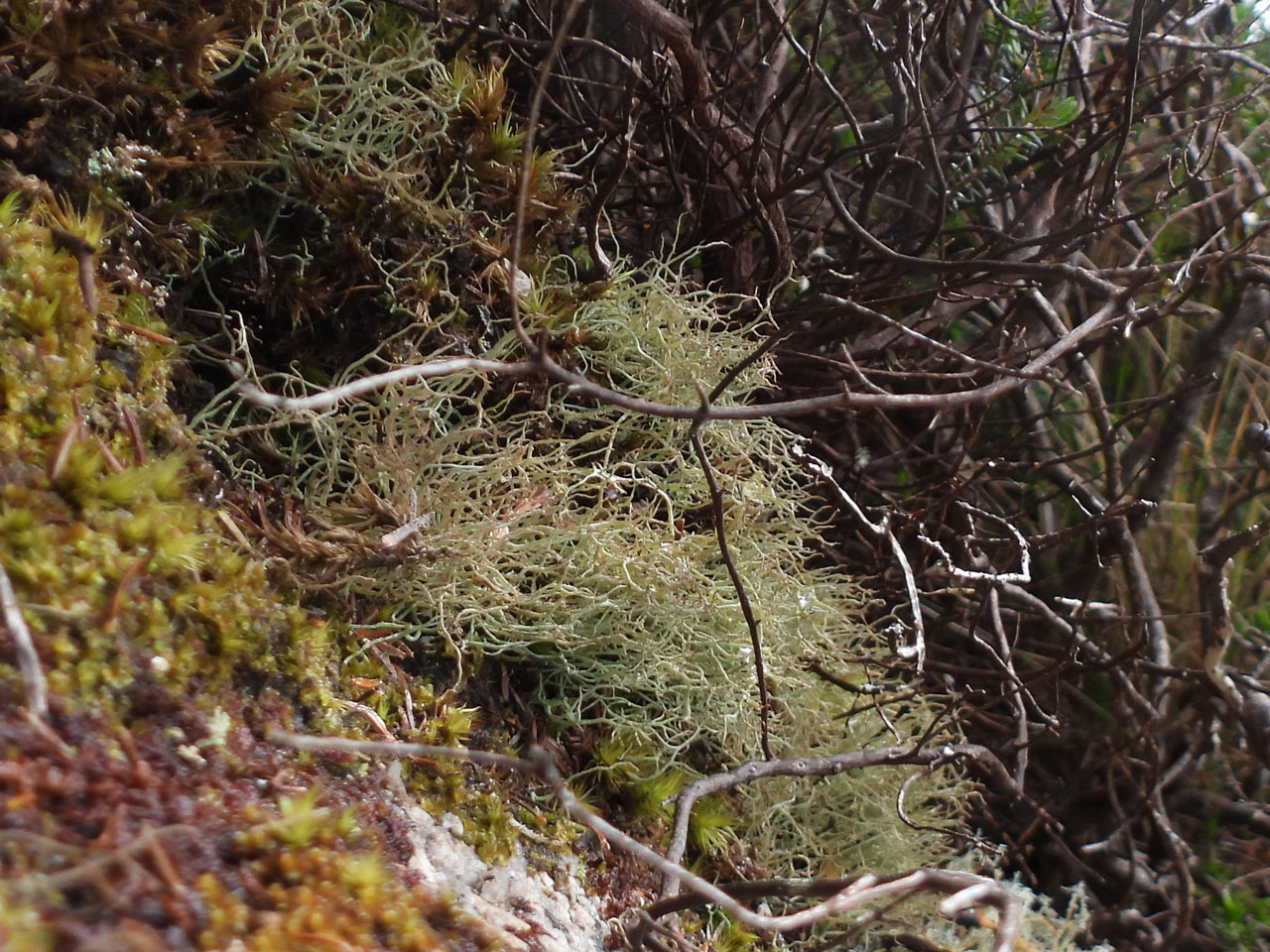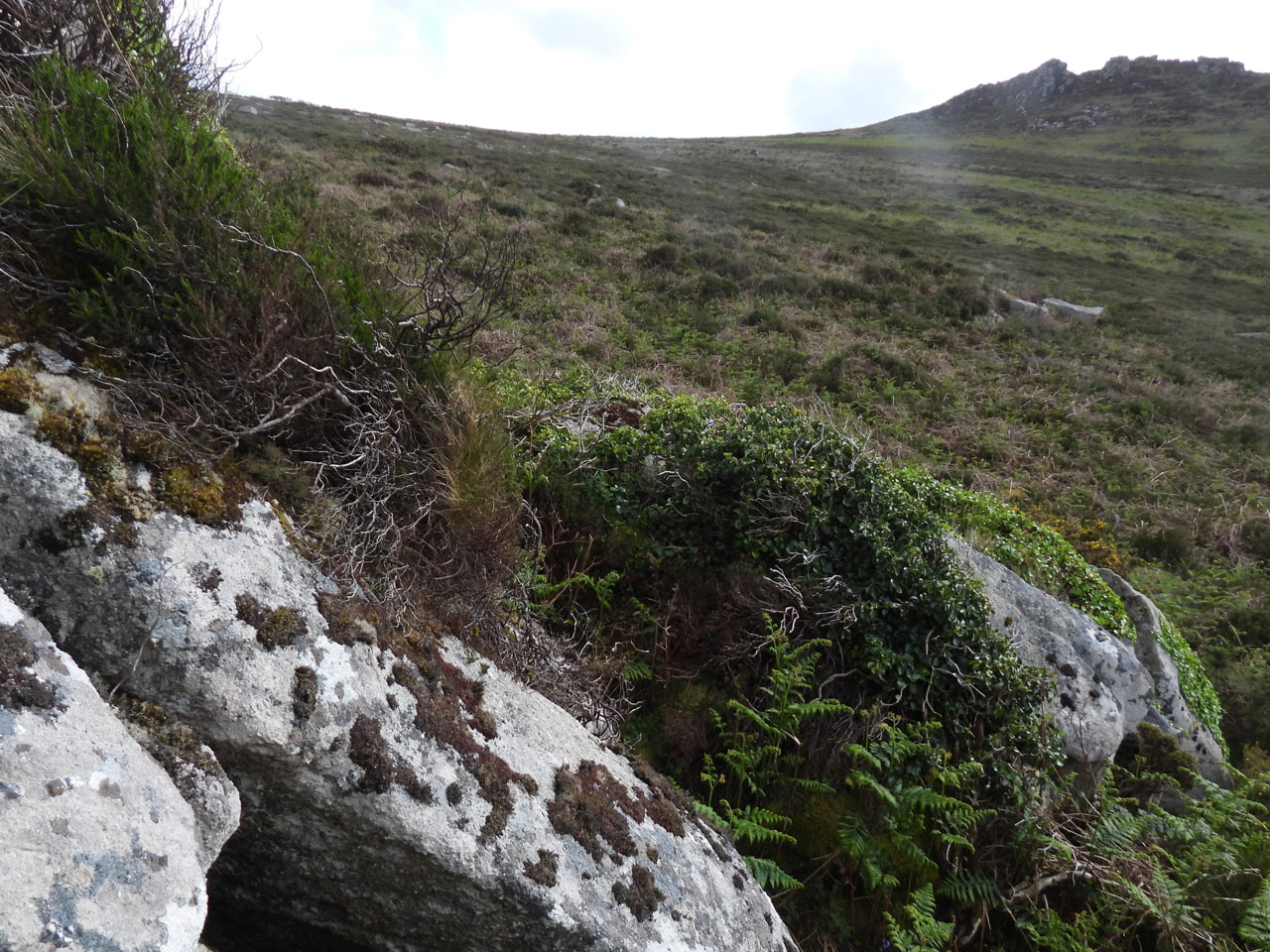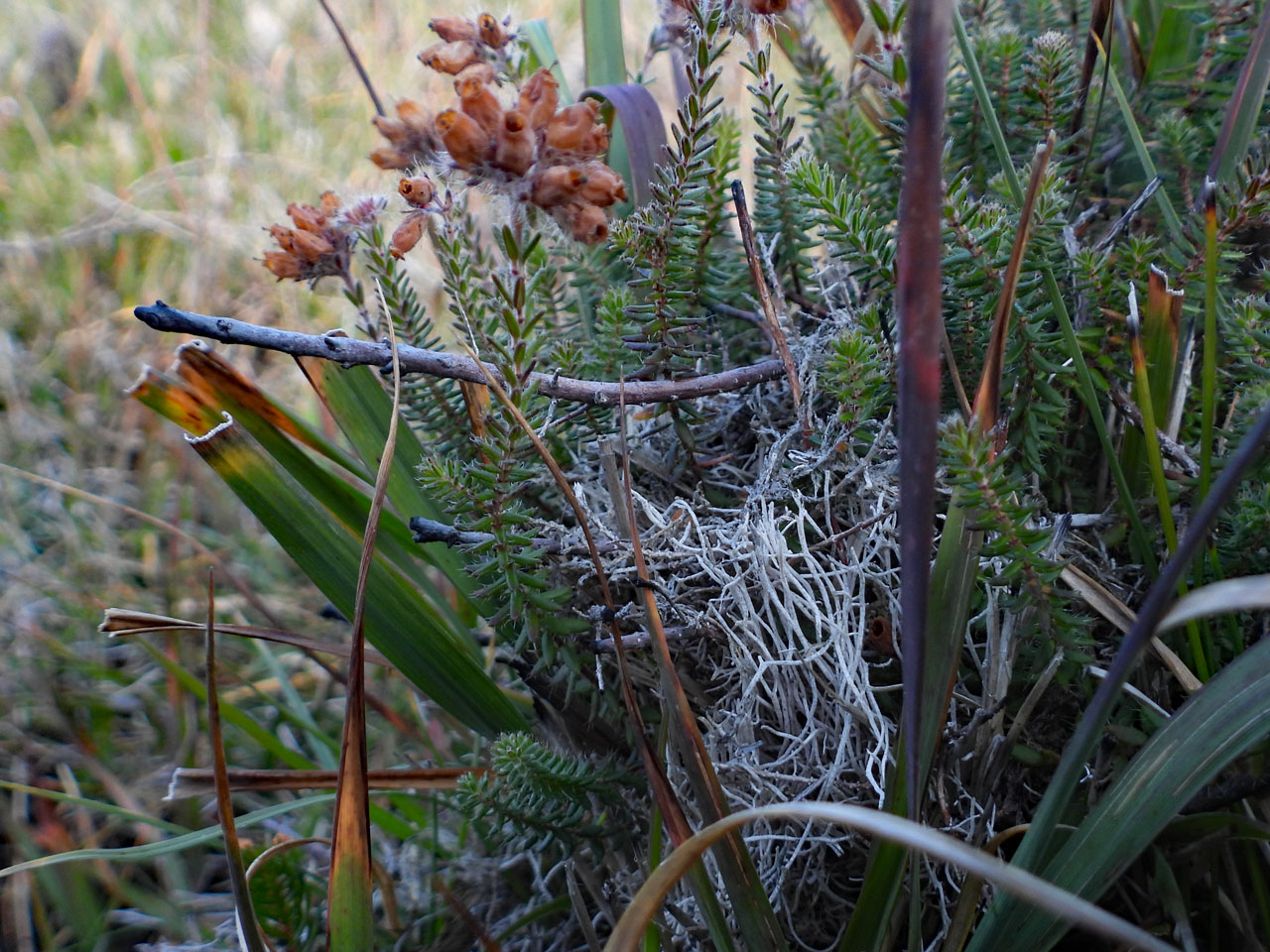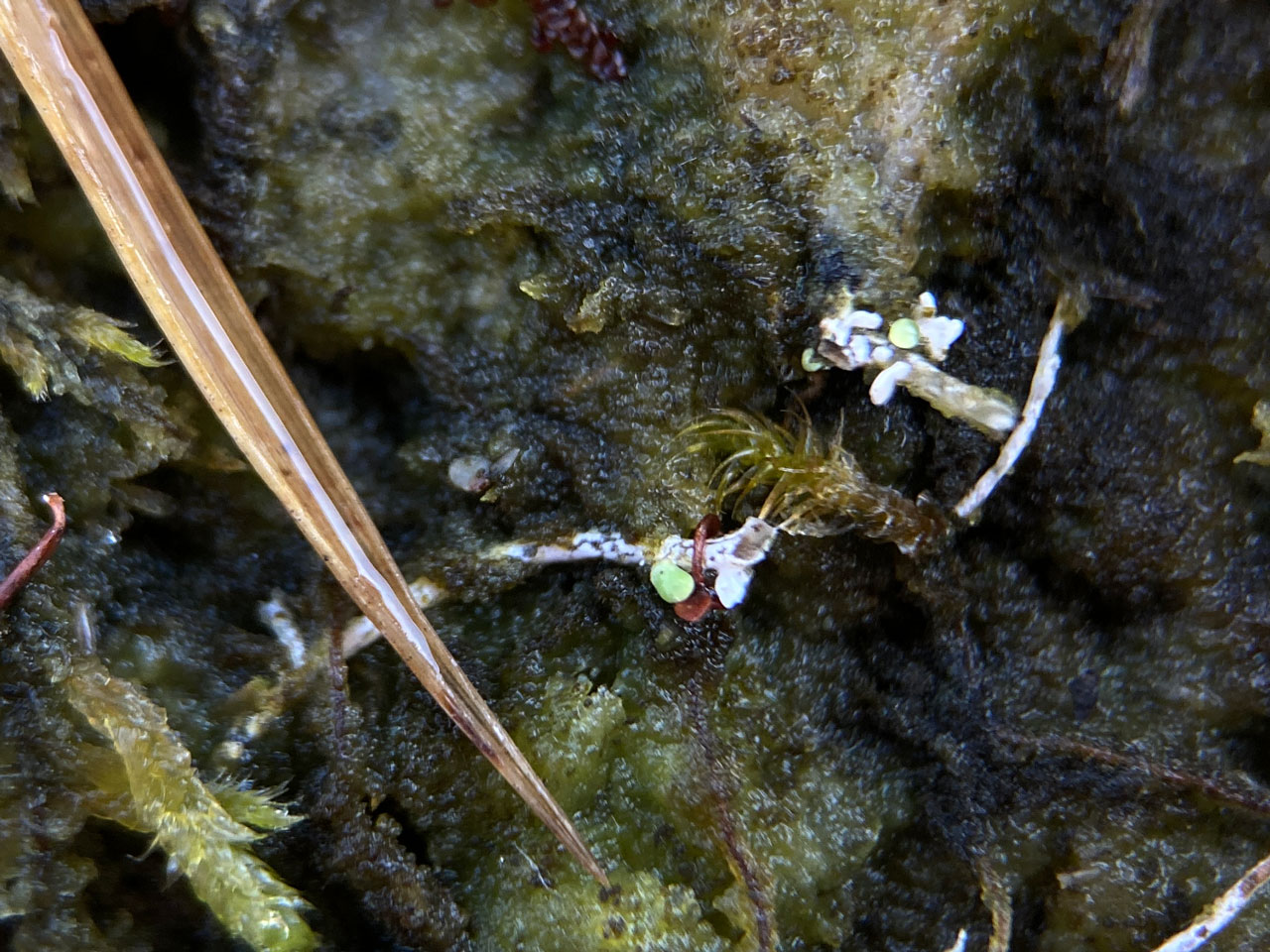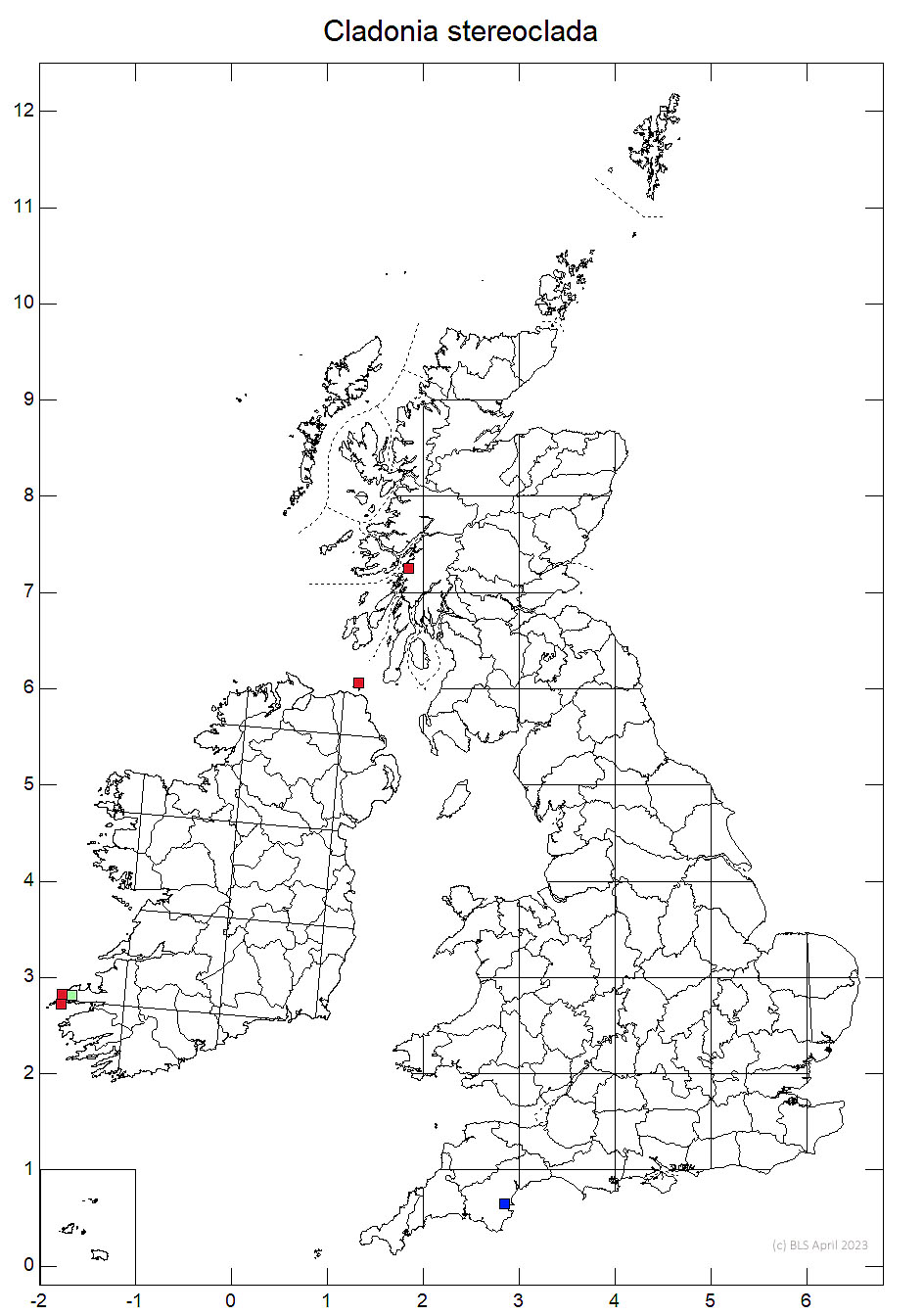Cladonia stereoclada
This lichen is easily overlooked as the common Cladonia furcata, but has a distinctive "jizz" and a very restricted main habitat of thin acid humus over rocks and in crevices on coastal slopes on the western coasts of Ireland and Britain. Also found in hummocks in wet Schoenus nigricans – Erica vagans heath. Compared to Cladonia furcata, the podetia are thinner, more flexose and with fewer and shorter branches plus they have a very distinct shade of grey–green tinged brown. Finally the solid, dense, translucent white to grey-black central axis provides conformation once spotted. Probably very under recorded and should be looked out for on the west coast of Ireland and Britain on exposed rocky headlands with moorland or heathland vegetation.
Like Cladonia furcata, but with very thin (0.3–0.5 mm diam.) worm-like flexuose podetia that are only sparingly branched and often entangled, and that are smooth, pale green-grey in shade becoming ± brownish, unevenly corticate in open situations and are uniquely solid within, the central axis dense, translucent white to ± grey-black. Thallus C–, K–, KC–, Pd+ red, UV– (fumarprotocetraric acid).
On close examination, the combination of thin, flexose and short branched podetia, with a very distinct shade of grey–green tinged brown are give this lichen a distinctive look, compared to Cladonia furcata, but it is easily overlooked unless specifically looked for. The solid, dense, translucent white to grey-black central axis provides conformation once spotted.
Most records from thin humus on acid rock outcrops and mossy boulders, particularly in crevices in bolder fields in heathy coastal slopes. Also recorded from hummocks in wet Schoenus nigricans – Erica vagans heath on the Lizard. Monitoring of habitat restoration in the Lizard heaths has shown that the lichen is fire tolerant and readily regenerates after prescribed fires.

Thinly reported from W. Scotland, N. Ireland, N.W. Ireland, S.W. Ireland and S.W. England (The Lizard & West Penwith), likely to be extremely under-recorded in the west of Ireland at least, where limited sampling produced new sites well way from recorded sites about half the time. Should be looked for in Wales.
Likely to be very vulnerable to loss from shading vegetation over growth with the abandonment of grazing of coastal slopes.
Britain: Data Deficient
Pino-Bodas, R., Sanderson, N., Cannon, P., Aptroot, A., Coppins, B., Orange, A. & Simkin, J. (2021). Lecanorales: Cladoniaceae, including the genera Cladonia, Pilophorus and Pycnothelia. Revisions of British and Irish Lichens 19: 1-45. Link
Text by Neil A Sanderson, based on Pino-Bodas et al (2021)
